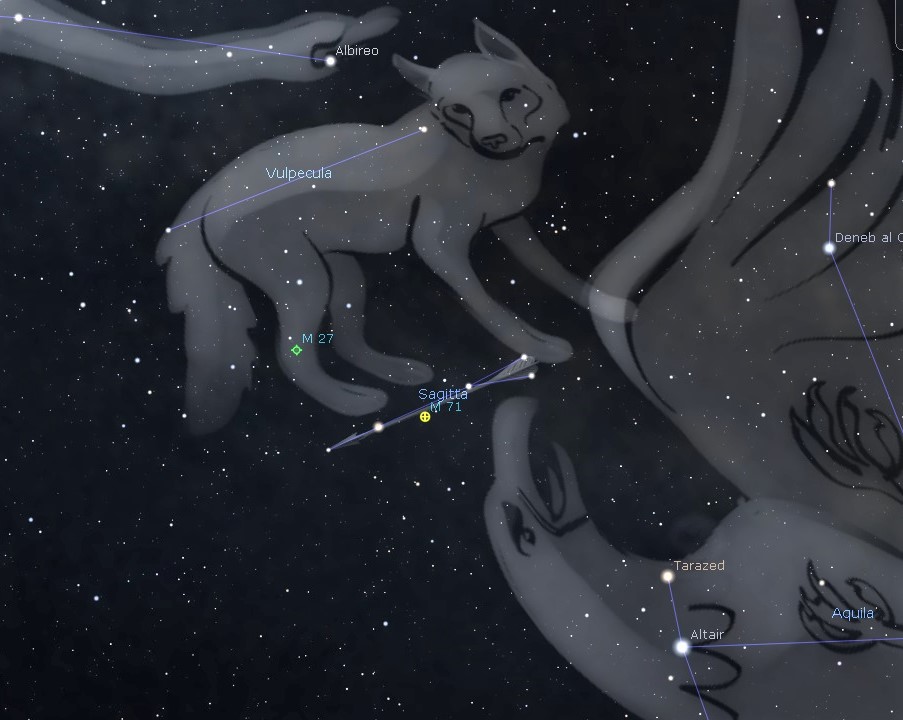This Week’s Sky at a Glance, 2020 June 27 – July 4 ~by Curt Nason
Arrows are used in signs as pointers to direct us to notable sites. As the Summer Triangle of the bright stars Vega, Deneb and Altair rise high in late evening, the tiny constellation of Sagitta the Arrow can direct us to a few interesting binocular objects. Sagitta is a compact arrow situated halfway between Altair and Albireo, which form the heads of Aquila the Eagle and Cygnus the Swan. Albireo itself is an interesting binocular object, being revealed as two colourful stars.
Looking under the shaft of the arrow with binoculars you might notice a hazy patch of stars called M71, which is a globular cluster containing more than 10,000 stars. As globular clusters go it is younger than most and relatively small. Half a binocular field above the arrowhead is ghostly M27, the Dumbbell Nebula. This is a planetary nebula; gases emitted from a Sun-sized star as its nuclear fuel was running out. The star collapsed into a hot, dense Earth-sized star called a white dwarf, and the ultraviolet radiation emitted from it causes the gases to glow. In older photographs of M27 its bipolar shape resembled a dumbbell. About a binocular width to the upper right of the arrow’s feathers is an asterism called the Coathanger cluster, a favourite treat for closet astronomers.
This Week in the Solar System
Saturday’s sunrise in Moncton is at 5:30 am and sunset will occur at 9:14 pm, giving 15 hours, 44 minutes of daylight (5:38 am and 9:16 pm in Saint John). Next Saturday the Sun will rise at 5:34 am and set at 9:12 pm, giving 15 hours, 38 minutes of daylight (5:42 am and 9:14 pm in Saint John). The earth is at aphelion, its farthest distance from the Sun at 152, 095,295 kilometres, on the morning of July 4. Brrrr.
The Moon is at first quarter on Sunday, giving great views for weekend observers. In evening twilight this Saturday, telescope users might pick out the Lunar X within the shadow line a little below centre. At midweek Jupiter rises before 10 pm followed by Saturn 20 minutes later, while Mercury is out of sight at inferior conjunction. On Tuesday evening telescope users can catch Jupiter’s Red Spot transiting around midnight. Mars will give its best views in early morning twilight, and while you are there look for brilliant Venus rising before 4 am.
With astronomy meetings and outreach activities on hold, you can watch the local Sunday Night Astronomy Show at 8 pm and view archived shows.
Questions? Contact Curt Nason.

